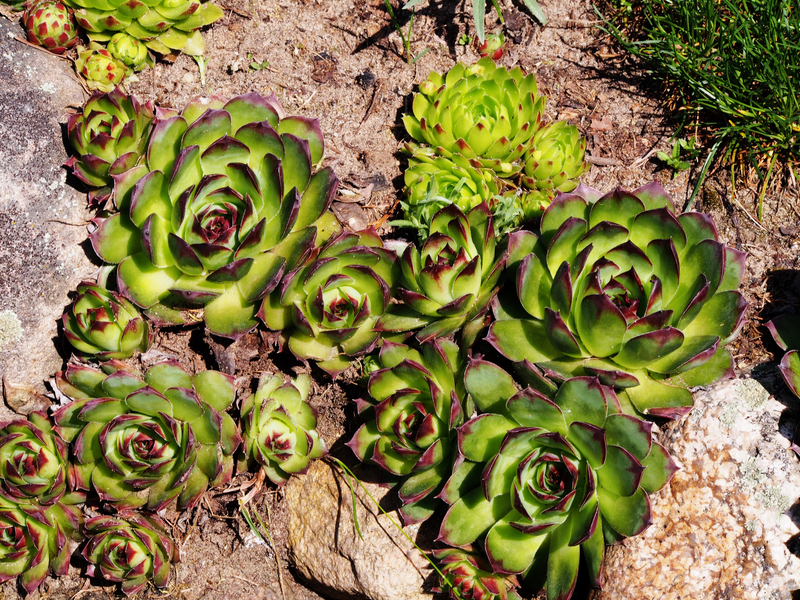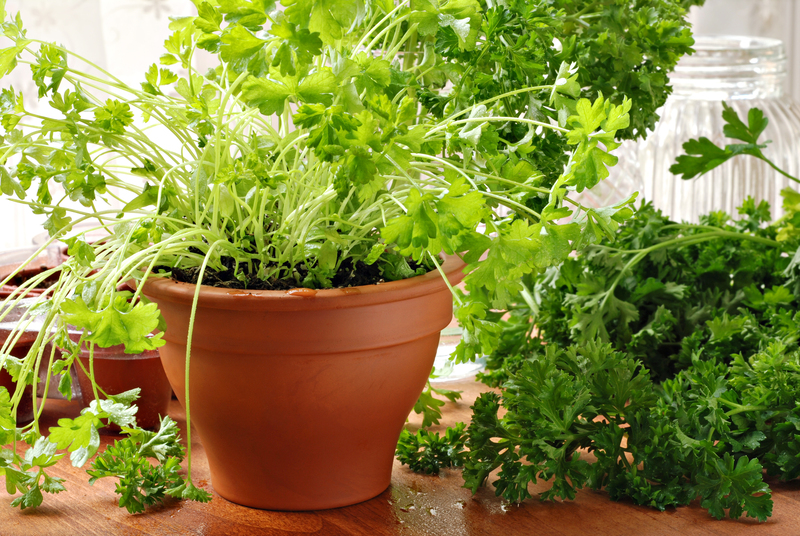Sustainable and Stylish Planting: Embrace Container Gardening
Posted on 18/08/2025
Sustainable and Stylish Planting: Embrace Container Gardening
Container gardening isn't just a trend--it's a movement that combines eco-conscious living with personal style. Whether you have a sprawling backyard or a cozy apartment balcony, container gardening offers a versatile and sustainable way to beautify your surroundings. In this comprehensive guide, we'll dive into the essentials of sustainable and stylish planting, exploring environmental benefits, design tips, plant selection, and eco-friendly practices.
Why Choose Container Gardening?
If you're seeking ways to bring greenery into your life, consider the many advantages of container gardening:
- Eco-Friendly Approach: By using repurposed containers and responsible watering practices, you reduce waste and conserve resources.
- Versatility & Flexibility: Suitable for both urban apartments and spacious homes, containers can be placed anywhere--balconies, patios, rooftops, and even indoors.
- Effortless Maintenance: Container plants often require less weeding, pest management, and ground preparation.
- Personalized Style: Express your creativity with unique pots, upcycled planters, and bold color combinations for a truly personalized garden.
Container gardening not only enhances your living space but also supports sustainability and eco-friendly planting practices.

Understanding Sustainable Container Gardening
Sustainability in gardening is all about creating a healthy balance between meeting your needs today and protecting the environment for future generations. When you apply this philosophy to container gardening, you reap multiple rewards--less waste, reduced consumption of water and chemicals, and a smaller carbon footprint.
What Makes Planting Sustainable?
- Choosing native and drought-tolerant plants that thrive in your climate
- Opting for organic and peat-free potting mixes
- Repurposing materials for containers and garden accessories
- Using natural fertilizers and pest control methods
- Minimizing water waste through efficient watering and drainage systems
By focusing on these strategies, you ensure that your container gardening is as eco-conscious as it is beautiful.
Plan Your Sustainable Container Garden
Step 1: Assess Your Space & Light
Begin by observing your available space. Do you have a sunny balcony, partial shade on your porch, a rooftop deck, or a small windowsill?
- Full Sun: 6+ hours of direct sunlight (great for herbs, succulents, most vegetables)
- Partial Shade: 3-6 hours (ideal for ferns, some salad greens, impatiens)
- Shady Areas: Less than 3 hours (suitable for certain ferns, mosses, and shade-tolerant flowers)
Step 2: Select Eco-Friendly Containers
Sustainable and stylish containers aren't hard to find; with a bit of creativity, you can upcycle or choose pots that tread lightly on the earth.
- Repurposed Containers: Old buckets, colanders, wooden crates, teapots, and even tin cans can become unique planters.
- Biodegradable Pots: Made from coir, bamboo, coconut husks, or recycled paper, these break down naturally over time.
- Recycled Materials: Pots made from recycled plastic or glass help divert waste from landfills.
- Ceramic, Clay & Terracotta: Traditional materials that are long-lasting and add a classic touch. Choose unglazed for better water permeability.
Tip: Ensure your chosen containers have drainage holes to prevent root rot.
Step 3: Choose the Right Soil and Amendments
The foundation of healthy container plants is the potting mix. For sustainable container gardening, avoid traditional peat-based mixes--peat extraction harms fragile ecosystems.
- Opt for peat-free, organic potting soil, often made with coir, composted bark, and mushroom compost.
- Enhance soil with homemade compost or worm castings to boost nutrients naturally.
Using a high-quality medium promotes strong roots and healthy growth--without chemical fertilizers.
Step 4: Pick Plants for Sustainability and Style
Blending sustainability with style is easy when you know what to look for. Focus on plants that match your light, climate, and desired appearance.
Best Plants for Sustainable and Stylish Container Gardens
- Native plants: These thrive in local conditions, require less watering and support wildlife.
- Edible plants: Herbs (basil, mint, parsley), salad greens, cherry tomatoes, chili peppers, and strawberries are productive and attractive.
- Perennials: Lavender, sage, thyme, succulents, and ornamental grasses return year after year, reducing replanting.
- Pollinator-friendly flowers: Marigolds, calendula, cosmos, nasturtiums, and echinacea attract bees and butterflies.
- Drought-tolerant options: Sedum, sempervivum, agave, and other succulents need little watering.
- Vertical growers: Vining plants like sweet peas, runner beans, or trellised cucumbers use vertical space efficiently.
Mixing different plant shapes, heights, colors, and sizes creates visual interest--so play with combinations for stylish results.
Decor & Design Tips: Make Your Container Garden Stylish
Combine Texture, Color & Shape
- Play with contrasts: Pair broad-leaved foliage with spiky grasses, or silvery greens with bold flowers.
- Opt for color echoes: Repeat colors from pots to plant leaves and blooms for style harmony.
- Mix heights: Create depth by grouping tall, medium, and cascading plants in clusters or single containers.
Statement Containers & Artistic Touches
- Unique planters: Try painted pots, mosaic tiles, or upcycled containers for stand-out appeal.
- Accessorize: Add eco-friendly garden sculptures, natural stones, or handmade markers for flair.
- Theme gardens: Mediterranean, cottage, herbal apothecary, or monochrome foliage can bring personality to your space.
Tip: Arranging groupings of pots at different heights, or using plant stands made from reclaimed wood, adds style and vertical interest.
Watering Wisely: Boost Sustainability and Plant Health
Water conservation is at the heart of sustainable and stylish container gardening. With containers, it's easy to tailor your watering system to both plant needs and the environment.
- Self-watering containers: These save water and reduce maintenance.
- Mulching: Top the soil with organic mulch or pebbles to retain moisture and cut down on evaporation.
- Rainwater harvesting: Collect rain in barrels to water your pots naturally.
- Schedule wisely: Water early in the morning or late in the evening to minimize evaporation during hot days.
Remember: Overwatering is a common container gardening mistake. Check soil moisture before watering again to avoid waste and root rot.
Fertilizing and Plant Care the Eco-Friendly Way
Skip synthetic fertilizers and pesticides--nature offers safer, more sustainable alternatives.
- Compost tea and worm castings provide ongoing nutrition
- Plant companions like marigolds and basil repel pests naturally
- Neem oil and mild soap sprays treat common insect issues safely
- Hand-picking pests or using sticky traps avoids chemical use
Container Gardening Throughout the Seasons
With the right planning, your eco-friendly container garden can thrive all year:
- Spring: Start cool-weather crops (lettuce, peas), primroses, and hardy perennials.
- Summer: Boost color with warm-tolerant annuals, tomatoes, and eggplant.
- Autumn: Try kales, pansies, asters; swap annuals for evergreens or grasses.
- Winter: In cold regions, bring pots indoors or use frost-tolerant species and insulated containers.
Minimize Waste: Repurpose, Reuse, Recycle
A true sustainable and stylish container garden is built on reducing waste. Make the most of what you have and think creatively:
- Reinvent containers: Upcycle old boots, tin pails, or broken ceramics into planters.
- Create homemade watering cans: Repurpose milk jugs or bottles with punched holes.
- Turn pruned branches into plant supports or trellises.
- Compost plant trimmings and kitchen scraps for organic fertilizer.
You'll save money, express your personality, and keep useful materials out of the landfill.
Common Challenges & How To Solve Them
Pest and Disease Management
- Rotate crops: Change plant types each season to prevent pest build-up.
- Encourage beneficial insects: Ladybugs and lacewings eat aphids and mites.
- Improve air circulation: Don't overcrowd containers to avoid fungal problems.
Soil Health and Drainage
- Mix in grit or perlite for better drainage.
- Don't reuse infected soil. Sterilize or replace as needed.
- Refresh the topsoil each season to add nutrients.
Benefits Beyond the Garden
Sustainable and stylish container planting offers more than just aesthetic rewards:
- Improves air quality in and around your home
- Reduces stress and boosts well-being
- Supports pollinators and biodiversity
- Provides fresh herbs and vegetables right at your doorstep
- Encourages eco-friendly lifestyles with less waste and chemical use
- Allows gardening regardless of space or mobility limitations

Inspiring Ideas: Spotlight on Sustainable Container Garden Styles
- The Mini Edible Garden: Cluster basil, parsley, and dwarf tomatoes in a large recycled tub for a kitchen-ready harvest.
- Pollinator Patio: Fill terracotta pots with marigolds, lavender, and echinacea to attract bees and butterflies.
- Urban Jungle: Mix rubber plants, philodendrons, ferns, and snake plants in upcycled baskets for a lush indoor oasis.
- Drought Defender: Group agaves and sedums with sandy soil in colorful mosaic containers to highlight water-wise planting.
Conclusion: Cultivate Beauty, Sustainability, and Joy
Container gardening is more than a hobby: it's a practical step toward sustainable living and personalized outdoor (or indoor) style. By choosing the right plants, using repurposed containers, conserving water, and avoiding chemicals, you can create a flourishing oasis that benefits you and the planet. Whether your garden is a single windowsill or an expansive rooftop, let sustainable and stylish planting guide you toward a greener, more beautiful world.
Ready to begin? Start gathering containers, pick your plants, and embrace the joy of container gardening--sustainably and in style!

